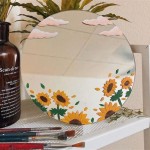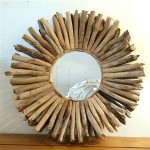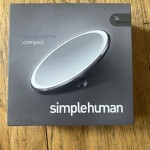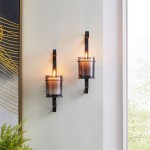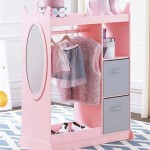How to Make Mirrored Furniture
Mirrored furniture adds a touch of glamour and can create an illusion of spaciousness in any room. While purchasing ready-made mirrored furniture is an option, creating custom pieces allows for personalized design and often comes at a lower cost. This process involves adhering mirror tiles or sheets to a furniture piece using specialized adhesives. Careful preparation and precise application are crucial for achieving a professional-looking result.
Choosing the right type of mirror is the first step. Standard glass mirrors offer a classic look, but they can be heavy and prone to shattering. Acrylic mirror sheets are a lightweight and shatter-resistant alternative. They come in various colors and finishes but may scratch more easily than glass. Consider the furniture's location and the desired aesthetic when making a selection.
The furniture piece itself requires preparation before mirror application. A clean, smooth surface is essential for proper adhesion. Start by cleaning the furniture thoroughly with a degreaser to remove any dirt, dust, or oils. If the furniture has a glossy finish, lightly sanding it with fine-grit sandpaper can improve adhesion. Fill any cracks or imperfections with wood filler and sand smooth once dry.
Accurate measurements are essential for cutting the mirror pieces to the correct size. Measure each section of the furniture that will be mirrored, noting any curves or angles. When working with glass mirrors, specialized glass cutters are necessary for clean, straight cuts. A straight edge or ruler can be used as a guide. Acrylic mirror sheets can be cut with a sharp utility knife or a plastic scoring tool. A metal ruler is helpful as a guide.
Selecting the right adhesive is crucial for a long-lasting bond. Mirror adhesive, specifically designed for glass and acrylic, is recommended. Construction adhesive or liquid nails can also be used, but ensure they are compatible with the mirror material. Read the adhesive manufacturer's instructions carefully for proper application and drying times.
Applying the mirror pieces requires precision and a steady hand. Starting with the largest pieces first is generally recommended. Apply a thin, even layer of adhesive to the back of the mirror or directly to the furniture surface, depending on the adhesive instructions. Carefully position the mirror piece onto the furniture, pressing firmly to ensure good contact. Use spacers, such as small pieces of cardboard, to maintain even gaps between tiles if desired.
Once all the mirror pieces are in place, allow the adhesive to cure completely according to the manufacturer's instructions. This typically takes 24 to 72 hours. Avoid disturbing the mirrored surface during this time. After the adhesive has cured, remove any spacers and inspect the mirrored surface for any gaps or imperfections. Small gaps can be filled with clear silicone sealant.
Adding finishing touches can enhance the overall look of the mirrored furniture. Decorative trim can be applied around the edges to conceal any raw edges and create a more polished appearance. Metallic or mirrored trim can complement the mirrored surface, while contrasting materials like wood or fabric can create a unique and stylish look. The choice of trim depends on the overall design aesthetic.
Safety precautions are essential when working with glass mirrors. Always wear safety glasses and gloves when cutting and handling glass. Dispose of broken glass shards carefully in a designated container. When using adhesives, ensure adequate ventilation in the work area. Read and follow all safety precautions provided by the adhesive manufacturer.
Maintaining mirrored furniture requires minimal effort. Dust regularly with a soft, dry cloth. Avoid using abrasive cleaners or harsh chemicals, as these can damage the mirrored surface. For stubborn smudges or fingerprints, a glass cleaner can be used sparingly. Spray the cleaner onto a cloth rather than directly onto the mirror to prevent streaks and damage to the surrounding areas.
Creating mirrored furniture can be a rewarding DIY project. With careful planning, precise execution, and attention to detail, one can transform ordinary furniture pieces into stunning, reflective accents. The versatility of mirrored furniture allows it to complement various interior design styles, adding a touch of elegance and sophistication to any space.

Diy Mirrored Dresser 7 Steps With Pictures Instructables

For All Things Creative Diy Mirrored Dresser Tutorial

Diy Mirrored Nightstands

You Look Good Mirrored Dresser Guest Remodelaholic

Diy Turn Boring Dresser Into A Mirrored Nightstand

Diy Mirrored Nightstands Furniture Makeover For Ann

Pin By Maha Bashir On Projects To Try Mirrored Furniture Diy Decor

Diy Mirrored Furniture Collage Makeover

My So Called Diy Blog How To Add A Drawer Nightstand Create Faux Mirror Using Mylar Furnishings Furniture Makeover Mirrored

How To Make Mirrored Furniture With Contact Paper Magic Brush Diy Bedroom


